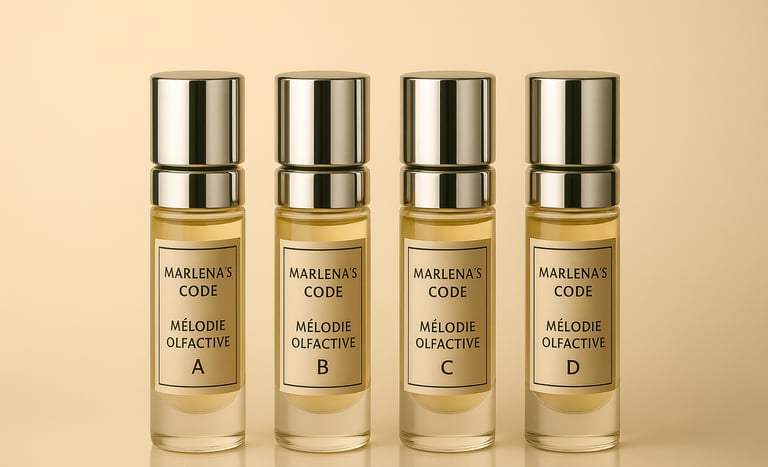Arts and creativity for fulfillment
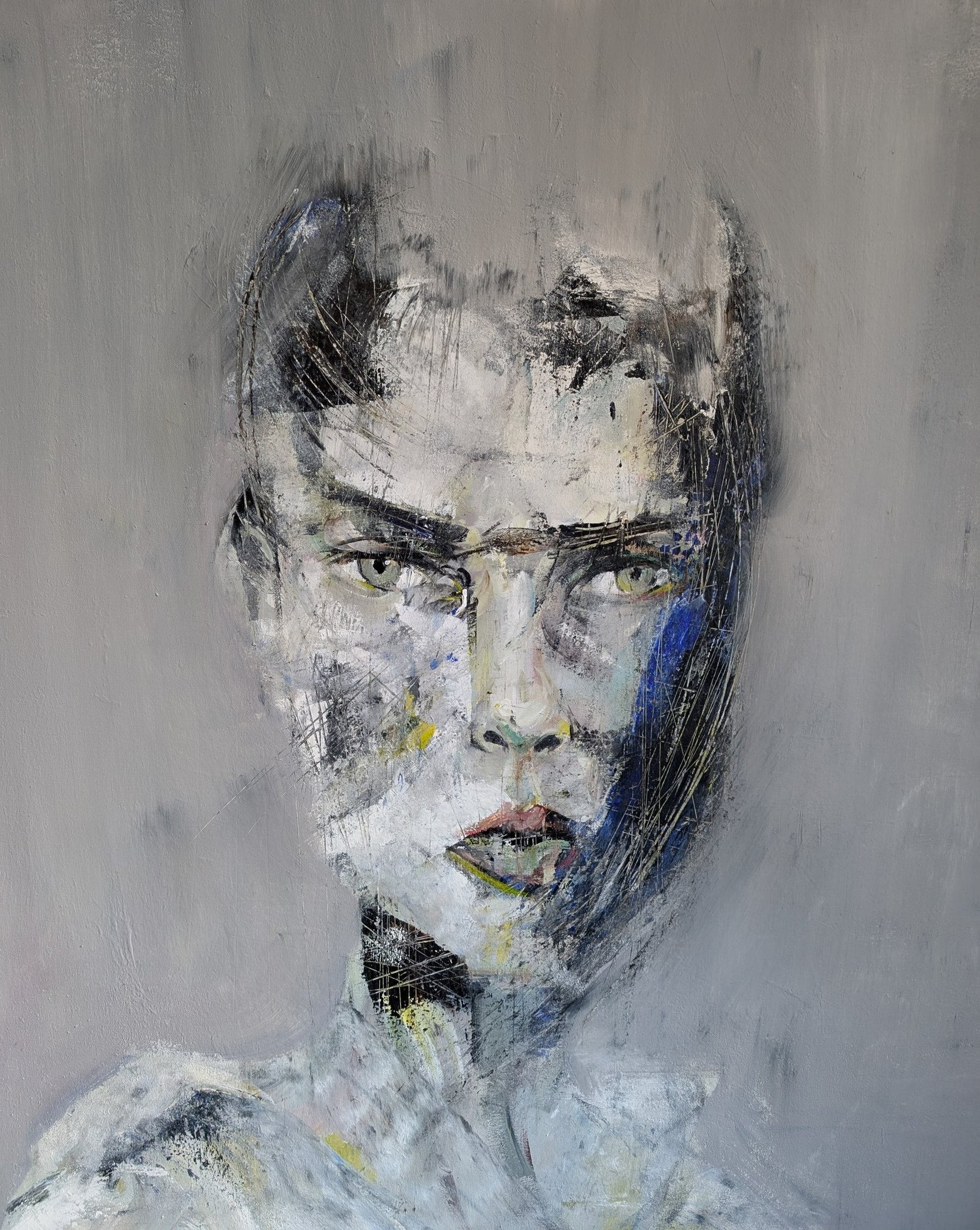
Maxence Victor Roduit
Discover our interview with Maxence Roduit, an atypical Swiss artist whose portraits capture the strength, fragility, and complexity of human experience. He shares insights into his creative process, the life of his studio, and how each painting establishes a silent dialogue with the viewer.
INTERVIEWS
Marlena Des
11/18/20256 min read
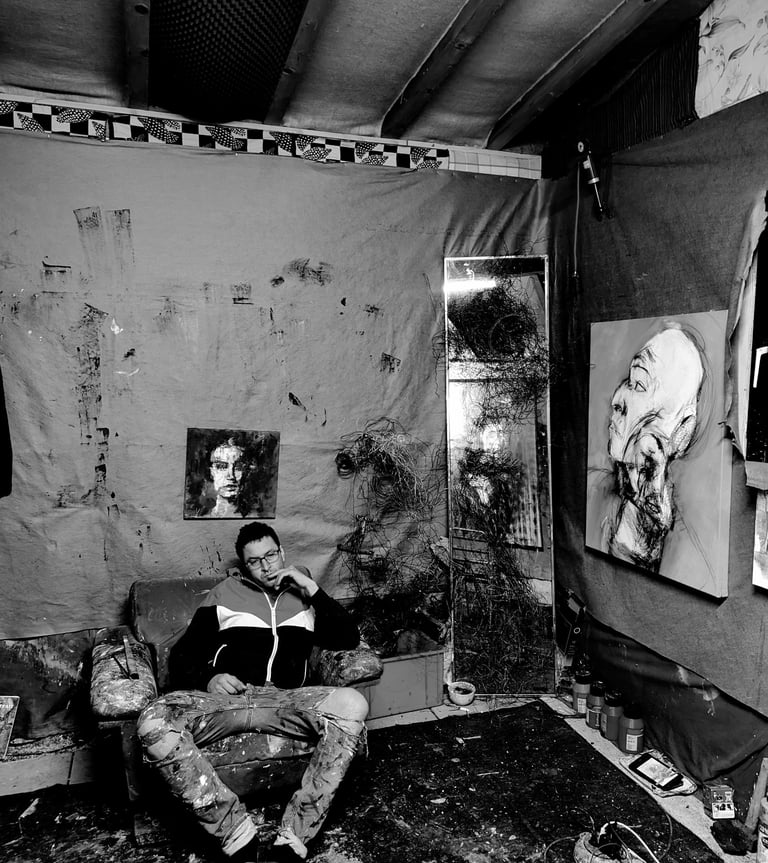

Mardès, a house of publishing, culture, and transmission
Mardès is an inclusive and modern house that edits poetry collections, essays, magazines, and works on the art of living. It also creates cultural and artistic events that foster reflection and sharing.
Its mission is twofold: to edit and to transmit — transmitting poetry, thought, and the gestures of daily life that ease existence and enrich sensitivity.
Through its support, several Musarthis contents remain freely available, affirming a generous and elegant vision of culture.
This article is offered freely, with the support of Mardès, Swiss publishing and cultural house, and Marlena’s Code, Swiss house of elegance and poetic high perfumery.
Maxence Roduit explores the depth of human experience through his portraits, blending fragility and strength, melancholy and hope. In this interview, he opens the doors of his studio and shares his creative process, revealing how each painting establishes an intimate dialogue with himself and those who contemplate his work.
An atypical Swiss artist whose work questions and touches the soul.
Maxence, where does your first gesture come from? The one that sought neither to please nor to say, but simply to exist.
My first pictorial gesture came after a form of depression, triggered by a painful awareness around my creative process in music, which was then my main medium. I found myself in a dark period, three weeks of falling, of emptiness. I’m not sure exactly how to name it, but it was there. And I had to react, to find a way out. My first pictorial gesture took place a few days after COVID in 2020. We know how much this period disrupted our ways of living, our social bonds, our landmarks. This collective upheaval also affected me deeply. It was at that moment that something shifted: I felt the need to change medium. Music, which had accompanied me until then, was no longer enough. I felt the need, almost as an obvious truth, to turn to painting. I threw myself into it body and soul, with an intimate sense of rightness, as if, finally, I were in the right place.Do you work with materials as if taming a secret? What do they whisper when no one is watching?
I’m not sure I am driven by a secret. In any case, that is not what moves me. What matters is the encounter with what the material offers me — a constant discovery, opportunities, potential, surprise. If I must speak of a whisper, I must admit it is rather unpleasant. The whisper is critical, it evokes mediocrity, difficulty, the illegitimacy of painting, even of existing. So, I craft existence with my portraits, I craft presence, I craft a force that asserts itself in the world.Is there an object, a light, or a silence in your studio that you would never trade for anything in the world?
In my studio, there is a photo of my friend. It relaxes me; it reminds me that outside, there are beautiful and joyful things. It’s a photo that helps me release pressure. I like having it somewhere, almost as a discreet but reassuring presence. There is also an old yellow armchair, stained with paint. It has been with me from the beginning. I often sit in it. In this chair, I recenter myself, reorganize my ideas, let the gestures come. These moments matter a lot to me. On the walls, six or seven canvases wait, ready. In harvest crates, I have stored rusted metal pieces found in a dump or recovered from local industrial companies. I also have bicycle parts waiting to find a place on a painting. My studio is neither beautiful nor luxurious. It is rather gloomy, humid, hot in summer, cold in winter, and it constantly forces me to turn on artificial light. Yet, despite everything, I feel at home. I regularly rearrange my studio. I need to feel it in movement and energy. It is very rarely visited. Painting in the presence of someone is impossible for me.Intimacy… is it for you a precious wound or a secluded garden?
To speak of intimacy, I want to speak of self-esteem. It may seem banal in a world where everyone faces the impossibility of reaching an ideal self. And yet, for me, this work of self-esteem is replayed with every painting. Each time, facing a blank canvas, I start with the feeling of radical incompetence. But as the gesture progresses, as the composition takes shape, something stabilizes within me. Confidence slowly emerges. And sometimes, at the end, a fragile but real feeling of satisfaction arises. I go through the labor, the discomfort, the effort, to reach a gentler, more benevolent relation with myself.Would you say you create to understand, to heal, or to navigate something beyond you?
It is obvious that, for me, creating is a restorative act; it allows me to survive in a society that has never inspired me, giving meaning to my life. Since childhood, I have felt out of step. I would be at a loss if I could not create. It is very difficult for me to fit into conventional work. I trained in social work but did not practice. I welcome the idea of care, even healing, because I sometimes go through dark phases, moments of doubt, suffering, sometimes near depression. Being engaged in a creative process calms me. Creation imposes a rhythm, forces me to stay connected, to exchange. It gives me a sense of place, a form of value. Yes, creating heals me, undoubtedly. My work gives me function, existence in the world. But fundamentally, what is the function of an artist? Perhaps it is to give shape to sensations, intuitions, ideas — to work with the sensitive to reach other sensitivities, where words are insufficient. Indeed, my work helps me navigate this world beyond me. I do not understand much of it, but at least I feel it, and I try to express it otherwise.What still moves you profoundly in the act of creating?
How to define the act of creating? It is starting from a blank page, glimpsing the infinite, and trying to give it form. From infinity, I isolate a fragment, focus, frame. I like the idea of highlighting a certain softness amid the world’s sadness. I try to tame this sadness, listen to it, until I perceive a certain tenderness. Reality then feels less harsh, less direct. This process allows me to offer existence something more bearable, less painful. I have never felt the need to paint smiles on my characters. My works are described as dark, hard, confrontational, sometimes raw. But it is the sadness, deeply rooted in the human condition, that I seek to capture and frame. There is also, despite myself, a highlighting of human power. It is not intentional; it results from an instinctive, almost uncontrollable gesture. People tell me my characters exude strength. I hardly realize it. Each time I create a character, it gives me the strength to create another. I am like a happy prisoner in a spiral where creation generates the desire to create. In this dialogue with the figures I bring to life, I hear something like: “Continue, keep going.” If a character fails to inspire desire, it means the encounter did not happen. I move quickly to another, seeking connection. I am constantly guided by the need for encounter, the need for feeling with the other.Can a work of art protect what we never dared to say aloud?
I seek neither transgression, subversion, nor provocation. My work does not fall within contemporary art but rather modern art. What I paint is primarily the expression of my interiority. I draw inspiration from Expressionism. Otto Dix, Egon Schiele, Edvard Munch, Francis Bacon, and many others profoundly influenced me. I admire the power of their works, their distortions of reality. In my work, my interiority filters reality and influences my gesture. There are no taboos. I seek transparency. I hide nothing. The metal pieces I add to my canvases may evoke armor, but they never obstruct the gaze. On the contrary, they accompany exploration. If my paintings sometimes mirror the viewer, invite reflection, or touch intimacy, so much the better. It is even what I hope for, simply.
Through his portraits, Maxence Roduit does not merely depict faces or emotions; he opens territories of the soul where the viewer can meet their own feelings. His art is both intimate and universal, deeply human, revealing the complexity, strength, and vulnerability of the human experience. The painting establishes a silent dialogue between the artist and the viewer, and demonstrates a rare and precious sensitivity.
“Constantly thinking about painting allows me to escape bitterness and lethargy. Maintaining excitement.” — Maxence Roduit
Maxence Roduit is featured in both editions of L’intime en architecture, available here: BUY THE EDITION
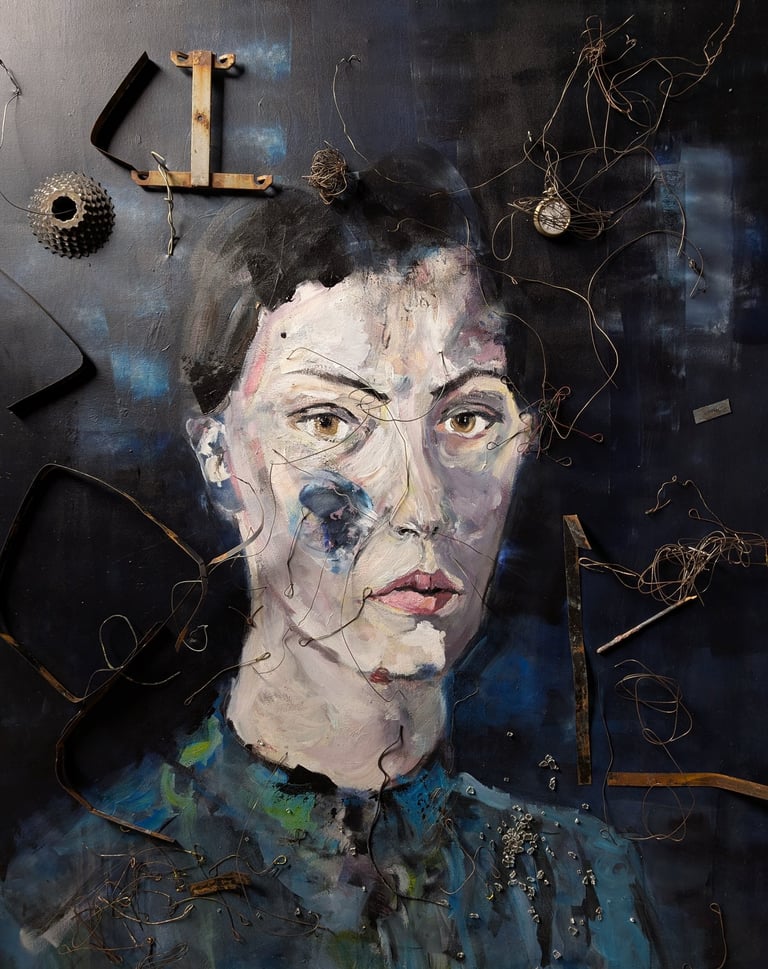

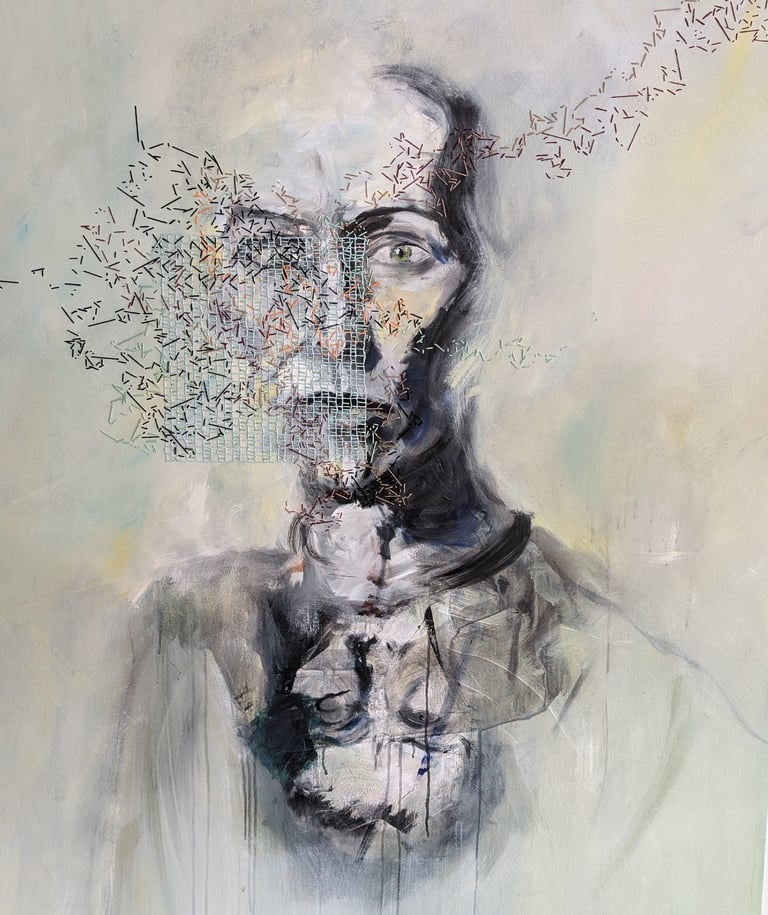

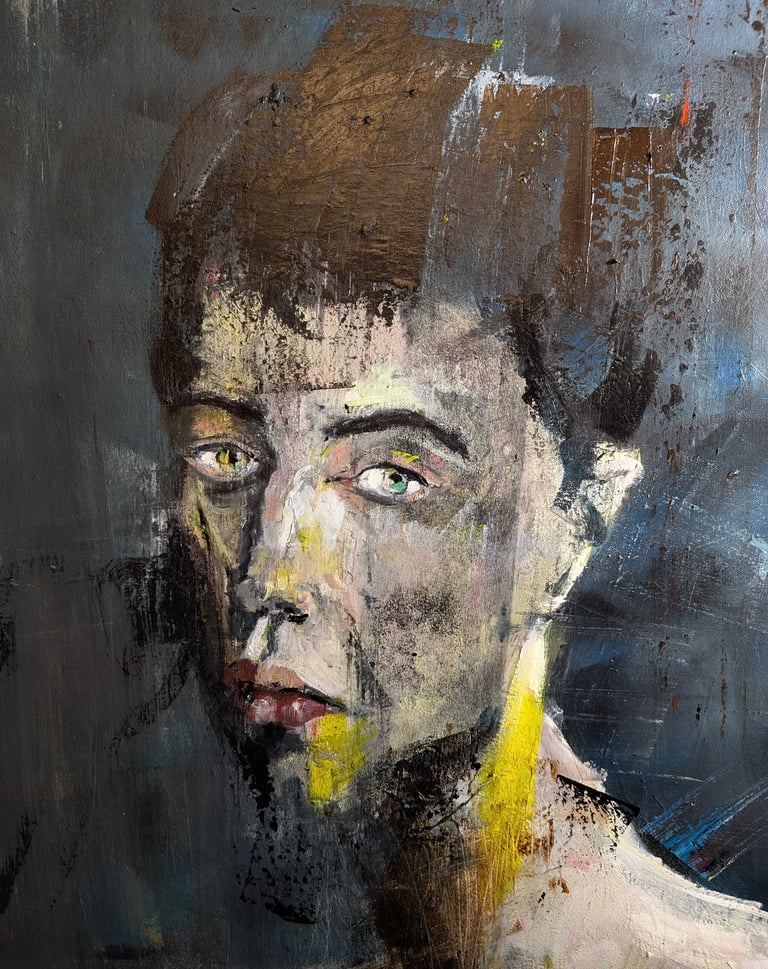

Artworks by Maxence Victor Roduit
Copyright photos : Maxence Roduit
Website : maxenceroduit.com
150 x 120 cm
150 x 120 cm
150 x 120 cm

Subscribe to our newsletter
MUSARTHIS
La Chaux-de-Fonds
CH-2300
Contact
info@musarthis.world
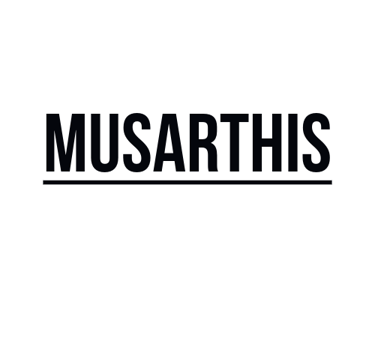

All rights reserved musarthis.world
Made in Switzerland

